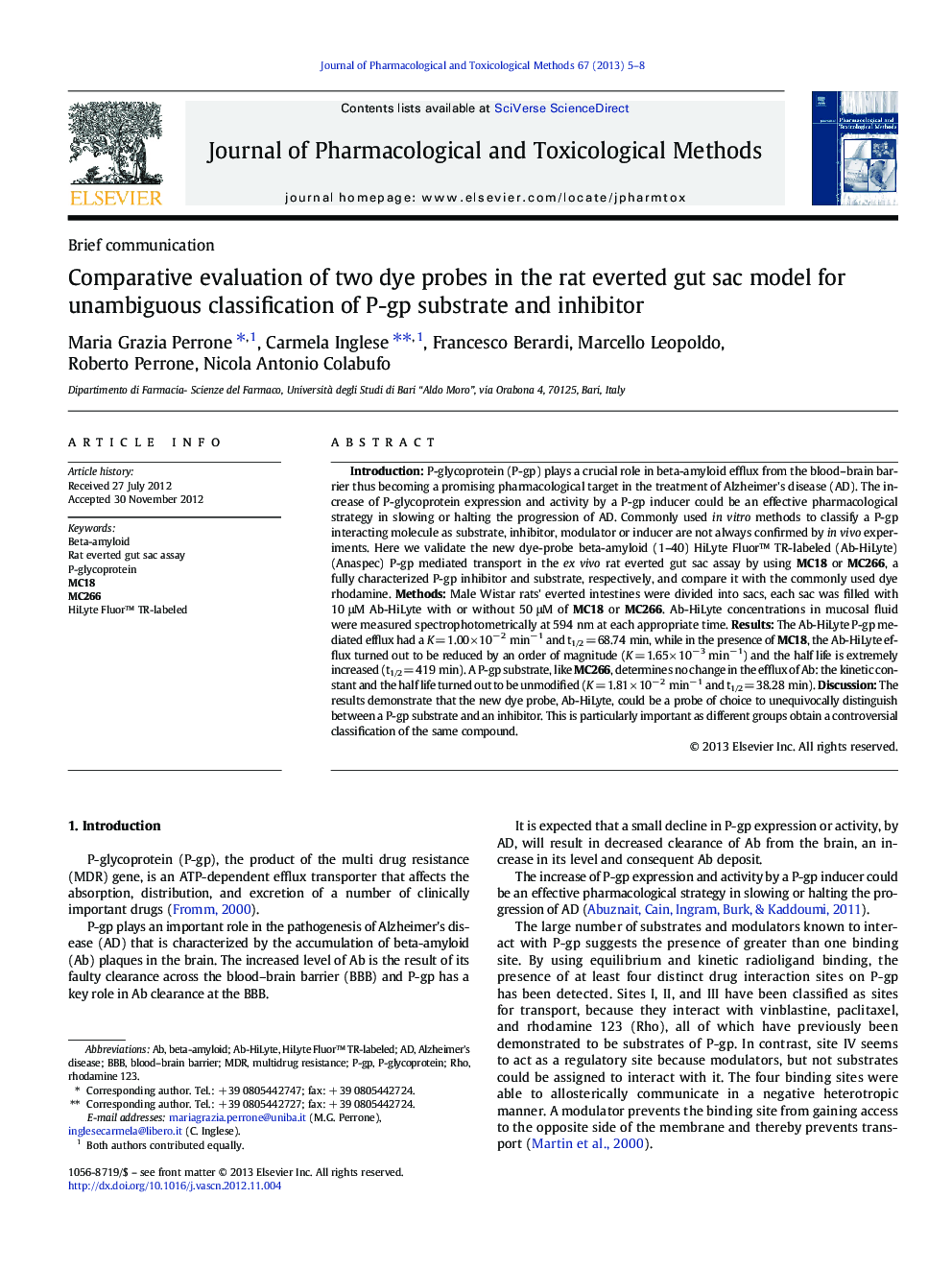| Article ID | Journal | Published Year | Pages | File Type |
|---|---|---|---|---|
| 2549219 | Journal of Pharmacological and Toxicological Methods | 2013 | 4 Pages |
IntroductionP-glycoprotein (P-gp) plays a crucial role in beta-amyloid efflux from the blood–brain barrier thus becoming a promising pharmacological target in the treatment of Alzheimer's disease (AD). The increase of P-glycoprotein expression and activity by a P-gp inducer could be an effective pharmacological strategy in slowing or halting the progression of AD. Commonly used in vitro methods to classify a P-gp interacting molecule as substrate, inhibitor, modulator or inducer are not always confirmed by in vivo experiments. Here we validate the new dye-probe beta-amyloid (1–40) HiLyte Fluor™ TR-labeled (Ab-HiLyte) (Anaspec) P-gp mediated transport in the ex vivo rat everted gut sac assay by using MC18 or MC266, a fully characterized P-gp inhibitor and substrate, respectively, and compare it with the commonly used dye rhodamine.MethodsMale Wistar rats' everted intestines were divided into sacs, each sac was filled with 10 μM Ab-HiLyte with or without 50 μM of MC18 or MC266. Ab-HiLyte concentrations in mucosal fluid were measured spectrophotometrically at 594 nm at each appropriate time.ResultsThe Ab-HiLyte P-gp mediated efflux had a K = 1.00 × 10− 2 min− 1 and t1/2 = 68.74 min, while in the presence of MC18, the Ab-HiLyte efflux turned out to be reduced by an order of magnitude (K = 1.65 × 10− 3 min− 1) and the half life is extremely increased (t1/2 = 419 min). A P-gp substrate, like MC266, determines no change in the efflux of Ab: the kinetic constant and the half life turned out to be unmodified (K = 1.81 × 10− 2 min− 1 and t1/2 = 38.28 min).DiscussionThe results demonstrate that the new dye probe, Ab-HiLyte, could be a probe of choice to unequivocally distinguish between a P-gp substrate and an inhibitor. This is particularly important as different groups obtain a controversial classification of the same compound.
